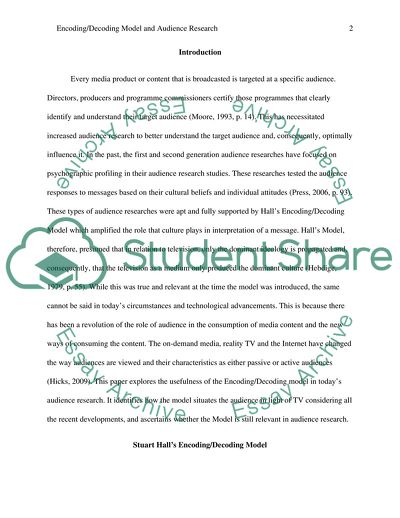Cite this document
(Stuart Halls Encoding and Decoding Model Usefulness in Todays Audience Coursework Example | Topics and Well Written Essays - 2500 words, n.d.)
Stuart Halls Encoding and Decoding Model Usefulness in Todays Audience Coursework Example | Topics and Well Written Essays - 2500 words. https://studentshare.org/journalism-communication/1829099-evaluate-how-useful-stuart-halls-encodingdecoding-model-is-for-audience-research-today-drawing-on-examples
Stuart Halls Encoding and Decoding Model Usefulness in Todays Audience Coursework Example | Topics and Well Written Essays - 2500 words. https://studentshare.org/journalism-communication/1829099-evaluate-how-useful-stuart-halls-encodingdecoding-model-is-for-audience-research-today-drawing-on-examples
(Stuart Halls Encoding and Decoding Model Usefulness in Todays Audience Coursework Example | Topics and Well Written Essays - 2500 Words)
Stuart Halls Encoding and Decoding Model Usefulness in Todays Audience Coursework Example | Topics and Well Written Essays - 2500 Words. https://studentshare.org/journalism-communication/1829099-evaluate-how-useful-stuart-halls-encodingdecoding-model-is-for-audience-research-today-drawing-on-examples.
Stuart Halls Encoding and Decoding Model Usefulness in Todays Audience Coursework Example | Topics and Well Written Essays - 2500 Words. https://studentshare.org/journalism-communication/1829099-evaluate-how-useful-stuart-halls-encodingdecoding-model-is-for-audience-research-today-drawing-on-examples.
“Stuart Halls Encoding and Decoding Model Usefulness in Todays Audience Coursework Example | Topics and Well Written Essays - 2500 Words”. https://studentshare.org/journalism-communication/1829099-evaluate-how-useful-stuart-halls-encodingdecoding-model-is-for-audience-research-today-drawing-on-examples.


